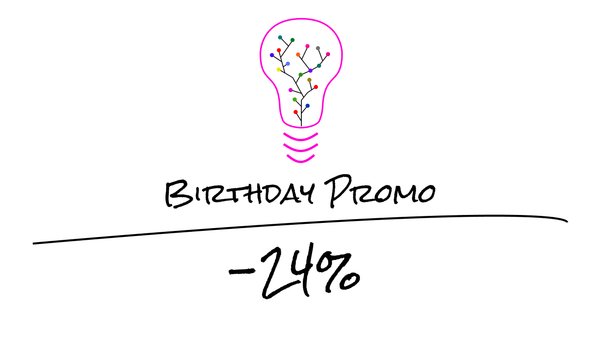Angular Tips: Understand Angular scroll position and ScrollPositionRestoration
How to correctly handle scrolling upon Angular route transitions

By default, when a new route is activated, Angular’s router doesn’t touch the scroll position. At least this is still true of Angular 9, even if it’ll probably change in the future.
This is problematic in some cases. For instance, if you are on a page that ends up being longer that the viewport, scroll down and navigate to a new route (e.g., using a routerLink), then if the new page is also longer than the viewport, the scrollbar will not be at the top. Not that great since you won’t see the top of the page.
Also, if you navigate back/forward using the browser’s buttons, the scroll position will not be restored either. A sad situation indeed…
Fortunately, there are different solutions to fix that. Let’s see how.
Bazooka approach
When a new route is activated, an “activated” event is emitted, which you can react to. So you could do something like this:
In the example App component above, notice that I’ve added a ###Content anchor so that I can access the ## element from the controller (using the ViewChild decorator).
Also, I’ve attached an event handler to the activate event. This event fires whenever a new route has been activated.
Let’s now look at what we can do with this in the controller:
In the controller’s onActivate method, I’ve simply retrieved the ##Content ## element from the DOM and set the nativeElement’s scrollTop property to 0, effectively bringing the scrollbar back to the top of the page.
This ensures that the actual content pane of the application is scrolled back on top whenever we arrive on a new route.
It does work for my use case but is far from perfect. Most notably, if I navigate back to a previous page, it’ll also be scrolled back on top, which is not always what you might want.
So, how can we improve this?
First of all, if you have pages that take a while to load, you could make use of the Window.scrollTo API to scroll to where you want (e.g., an anchor or something), or using the ViewportScroller of Angular, but this would be a nightmare to ##tain as it would have to be handled page per page. Moreover, it would only work if your page layout relies on the ## viewport (i.e., if the whole layout scrolls).
Ideally, if you need to remember and restore scroll positions when navigating back/forward, it’s probably better to have a more powerful solution.
Angular’s built-in (but broken?) solution
Since version 6, Angular has built-in support for restoring the scroll position when navigating using the Angular router. Note that, as of Angular 9, that feature still isn’t enabled by default.
To enable scroll position restoration (as it is called), you need to adapt your app-routing.module.ts file (i.e., the place where you should find the RouterModule.forRoot call):
In the example above, I’ve enabled the scrollPositionRestoration feature of Angular, which takes care of restoring the scroll position (heh) when navigating.
That setting accepts multiple values:
disabled: default, which does nothingtop: force scroll position to be (0,0) on all navigationenabled
When it is set to enabled, it:
- Scrolls to top whenever you navigate to a new route
- Restores the previous scroll position when you navigate back to a previous route
Unfortunately, even if it sounds perfect, as explained in this issue, it doesn’t solve all the problems and doesn’t work in all situations.
For instance, in my case, it didn’t help one bit because it only takes care of the scroll position of the ## viewport. Since my application’s layout has a fixed top/left bar, only the content pane (contained in my “##” element) can scroll. This means that scrolling to the top of the page can’t be done simply by using Window.scrollTo(…). In practice, the scroll position restoration feature of Angular doesn’t do anything useful for my application.
Another case where it won’t be able to help is when your content takes time to load. If that’s the case then, depending on the timing, the Angular support for scroll position restoration might fail and put the page on top even if should have restored the scroll position lower.. The thing is that it isn’t aware of your content at all.
Also, it isn’t able to tell the difference between route changes that replace the entire viewport of only change a subset of the page (e.g., changing the contents of a secondary router outlet).
In Angular’s defense, restoring the scroll position isn’t that easy and certainly hard to handle for all cases alike. Other libraries like React and Vue also face the same kinds of issues.
Check out the github issue for other improvement ideas.
Bummer. Let’s try something else.
Custom router scroll service
As far as I’m concerned the bazooka and built-in solution of Angular didn’t cut it. I’ve thus started looking for alternatives.
After searching for a bit, I’ve stumbled upon a great (as usual) article from Angular In Depth which proposed to leverage RxJS and router events to keep track of scroll positions and restore those if/when needed.
Based on that article, its comments and some personal wizardry, I’ve written an Angular service that:
- keeps track of the scroll position of the ## viewport (just like Angular can do, which is fine for some cases)
- optionally keeps track of the scroll position of some additional HTML element (e.g., my ##Content ## element, which is my application’s real content viewport)
- can be configured programmatically using the service’s API
- can be configured declaratively through custom route data definitions
- works great with lazy loaded modules
Here are its interfaces:
Let’s go through these step by step.
The RouterScrollService:
disableScrollDefaultViewport: by default, the service keeps track of the scroll position of the default viewport (i.e., just like Angular does). This method allows disabling that, meaning that it won’t track/adapt its scrolling positionsetCustomViewportToScroll: this method can be called to tell the service to keep track of & adapt the scroll position of a specific HTML element. I’ll show an example usage afterwardsaddStrategyForPartialRoute: way to programmatically register a route path and define the expected scroll behavior for matching routes- …
As I’ve explained above, the RouterScroll service not only supports programmatic configuration (using addStrategyForPartialRoute), but also supports declarative configuration through the route’s data. To that end the CustomRouteData interface defines an optional scrollBehavior field for application routes and can be used to strongly type the route data (I’ll write an article about that subject later on :p).
Here’s an example showing how these interfaces can be leveraged while defining the routes:
In the example above, I’ve defined a route leveraging the CustomRoute type and specifying the scrollBehavior for that route as KEEP_POSITION, meaning that its scrolling position should be tracked/restored when needed.
Here’s the implementation of the service:
This service follows the general algorithm proposed by Jason Awbrey, with a few twists, so make sure to check out his article for implementation details.
Note that this service must be declared (as I’ve separated interface/implementation and defined an injection token).
Here’s how to declare it, just in case:
With this service declared and loaded (through a CoreModule.forRoot() call, then service can easily be injected and programmatically configured like this:
With the above in place (and still considering the same AppComponent template presented earlier in this article), the service is now configured to also keep track of the scroll position of the ##Content ## element of the page. This ensures that this specific viewport’s scroll position will also be recorded/restored whenever needed.
This solution is much more powerful than what I could achieve with the bazooka approach (i.e., always scroll to top) or with Angular’s built-in support for scrolling. Now, I can easily adapt the configuration route per route. To define the behavior for each route, I’m using the declarative approach, which feels cleanest.
There’s still tons of room for improvement though. For instance, Ben Nadel has created a much more advanced solution, capable of keeping track of the scroll position of various elements in the DOM. He explains his approach in detail here. With a bit of effort, the service above could be refactored to do something similar.
At the very least, it could be improved to keep track of more than a single additional viewport’s scroll position, which would be nice for applications relying on multiple router outlets.
Conclusion
In this article, I’ve explained what I’ve learned recently about scroll position handling in Angular using the Angular router.
As I’ve explained, there are different ways to handle the scrolling behavior when navigating between routes. Some more or less powerful, some with quirks/bugs.
There are certainly tons of other ways to do all this but, for now, the service that I’ve created and shared here (standing on the shoulder of giants) does what I need and is simple enough to use/configure.
If you want to learn more, make sure to check out the Angular In Depth article of Jason Awbrey as well as Ben Nadel’s awesome blog.
That's it for today! ✨
About Sébastien
I'm Sébastien Dubois, and I'm on a mission to help knowledge workers escape information overload. After 20+ years in IT and seeing too many brilliant minds drowning in digital chaos, I've decided to help people build systems that actually work. Through the Knowii Community, my courses, products & services and my Website, I share practical and battle-tested systems. You can follow me on X 🐦 and on BlueSky 🦋.
I am an author, founder, and coach. I write books and articles about Knowledge Work, Personal Knowledge Management, Note-taking, Lifelong Learning, Personal Organization, and Zen Productivity. I also craft lovely digital products.
If you want to follow my work, then become a member and join our community.
Ready to get to the next level?
If you're tired of information overwhelm and ready to build a reliable knowledge system:
- 🎯 Join Knowii and get access to my complete knowledge transformation system
- 📚 Take the Course and Master Knowledge Management
- 🚀 Start with a Rock-solid System: the Obsidian Starter Kit
- 🦉 Get Personal Coaching: Work with me 1-on-1
- 🛒 Check out my other products and services. These will give you a rock-solid starting point for your note-taking and Knowledge Management efforts





